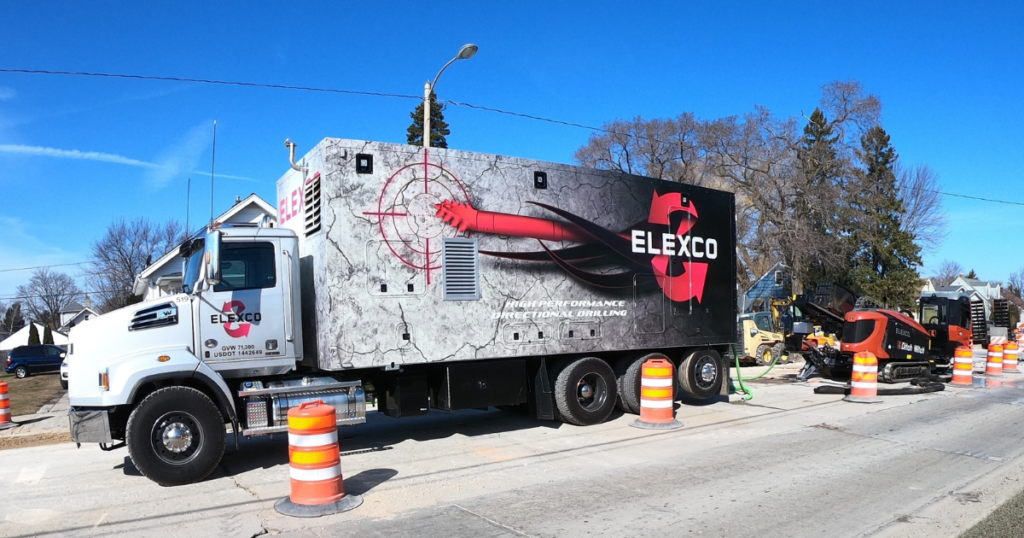Horizontal Directional Drilling (HDD), also known as boring, is one of the many services Elexco provides. HDD is a steerable, trenchless method of installing underground pipes, conduits, or cables. HDD offers minimal disturbance to existing habitat and preserves the aesthetic in contrast to open trenches.
Elexco uses HDD in various soil conditions and jobs, including road, landscape, and river crossings. The pipe can be PVC, polyethylene, polypropylene, ductile iron, or steel as long as it can be pulled through the drilled hole.
When to Consider HDD
According to Vermeer:
You should consider Trenchless Technology if you answer with a YES to two or more of the below questions:
- Is the pipe 5 ft (1.5 m) deep or more?
- Is the pipe below water table?
- Is the soil unstable?
- Is the underground congested with other utilities?
- Is the installation in an urban area?
- Is the installation under a roadway, railroad or river?
- Is the installation in a residential area?
- Are installation lengths over 180 ft (60 m)?
The Process
Step 1: Pilot Hole
The first step in HDD is to drill a small pilot hole. Fluid is pumped through the drill pipe toward the bit. There high-pressure jets grind the soil ahead of the drill. Fluid and debris are carried back to the drill rig. The pilot hole is tracked by either a walkover guidance system or with wireline magnets. Either way, a transmitter or steering tool near the drill head signals the location engineer the exact drill coordinates. Elexco constantly checks the readings to ensure the depth, alignment, and slope of the drill. Adjustments to the bore path are made as needed. The speed of the pilot hole varies based on soil conditions and the angle of the drill. After the pilot hole reaches the exit point, the beacon housing is replaced with a reamer.
Step 2: Pre-Reaming
The second step in Horizontal Directional Drilling is to pre-ream the pilot hole. This will enlarge its size sufficiently to install the product lines. Our operators pull back and rotate the reamer while pumping drilling fluid to cut and remove debris to widen the hole. Speed is determined by the amount of debris and soil conditions.
Elexco uses bentonite and other additives to clean and stabilize the borehole. Sometimes we use polymers to break up the clay. The right consistency of the soil and drill fluid will prevent blockages, fluid loss, and breakthroughs.
Step 3: Pipe Pullback
The final step is to pull back the pipe through the pre-reamed hole. The drill rod and reamer are attached to a swivel. Our techs are careful to prevent any torsional stress on the pipe. As the pipe is pulled into the drill hole, drilling fluid provides lubrication.
View some of our Water, Sewer, & Drainage projects here.
Resources/Citations
https://vermeer-middleeast.com/pipeline-installation/horizontal-directional-drilling/




It’s great that you pointed out how horizontal directional drilling offer minimal disturbance to existing habitat and preserves the aesthetic in contrast to open trenches. I was watching a video about a construction project earlier and I saw how they needed to drill underground. It seems professional help is need for such things, which is quite understandable.